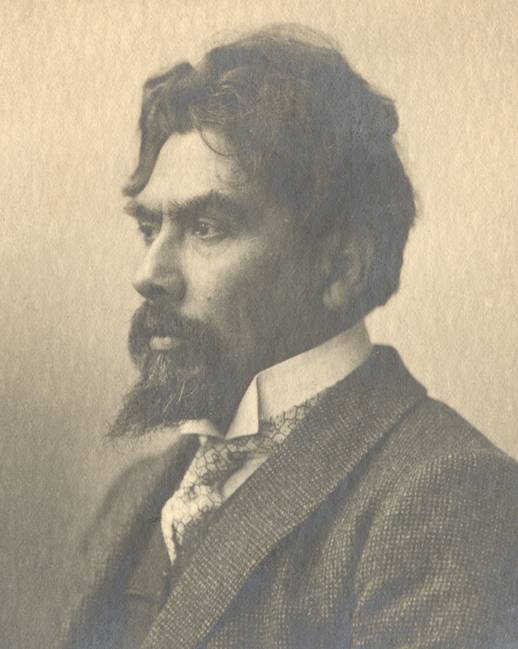Jan Theodor Toorop (1858-1928) Dutch impressionist, symbolist and art nouveau painter, illustrator and graphic designer
Jan Toorop is known as one of the most brilliant painters of Symbolism and Art Nouveau. Also, the different developments of his artistic designs make him a precursor of the avant-garde movements of the 20th century.

Johannes Théodor Toorop, know as Jan Toorop, was born on the island of Java in Indonesia, in 1858. He was born to a civil servant who traveled a lot between Dutch trading posts and an English mother.
At the age of 11, Jan returned to the Netherlands, where he attended secondary schools in Leiden and Winterswijk. In 1881, he continued his studies at the Academy of Amsterdam in Delft.
Resulting from his childhood experiences, Jan Toorop's style is highly individualistic merging Javanese motifs with Symbolist elements, creating slender figures that foreshadowed the ebbing and flowing style of Art Nouveau paintings.
In 1882, upon moving to Brussels, he signed up for the Académie des arts décoratifs. He joined Les Vingt, and 2 years later he exhibited in Paris in the Salon des Artistes Indépendants. Jan Toorop also visited England many times where he got acquainted with the works of William Morris and the Pre-Raphaelites.
Toorop married Annie Hall, in 1886. The next year, he suffered temporary blindness from an illness while Seurat’s Sunday Afternoon or La Grande Jatte was being shown in Brussels.
First Revelation: Symbolism
Three years after their marriage, Jan Toorop and Annie Hall moved to live in England alongside Guillaume Vogels while the painter was arranging an exhibition featuring Les Vingt artists in Amsterdam. In 1890, he returned to the Netherlands and began working on his first pointillist canvases inspired by Seurat.
Around this time, Jan Toorop experienced Symbolism when he read the poetry of Belgian writer Maurice Maeterlinck, which he thought of as a revelation. Henceforth, Toorop would frequently use Symbolist elements such as mythological subjects, yet the execution of his paintings remained firmly grounded in Art Nouveau.

Toorop's paintings evoking shady puppet theater, present the bosomy, curvilinear designs of luxurious Art Nouveau wallpaper, where similar elements of design and ornamentations are ceaselessly repeated.
In portrayals of various genuine mysteries, Toorop's figures are based on a feminine silhouette with long, slender arms interwoven with endless waves of long hair. They stand in a world where heaven and earth have no clear boundaries.
In this period of his life, Jan Toorop also created several posters and illustrated all sorts of works, employing, for the main, graceful arabesques, characteristic of the works of Aubrey Beardsley.


Second Revelation: Religion
A second revelation in Jan Toorop's life was discovering the path of religion in 1905. After converting from Protestantism to Catholicism, he began building all his work around his new-found faith. His art became even more mystical.
This shift in world-views inspired the artist to revisited neo-Impressionism and purify his designs. He simplified his rolling Art Nouveau lines, making them stiff and severe, while retaining their fineness of structure.
Jan Toorop died in La Haye in 1928. Until the 20th century, Toorop’s art bridged the gap between Art Nouveau and Symbolism in a delicate way.








